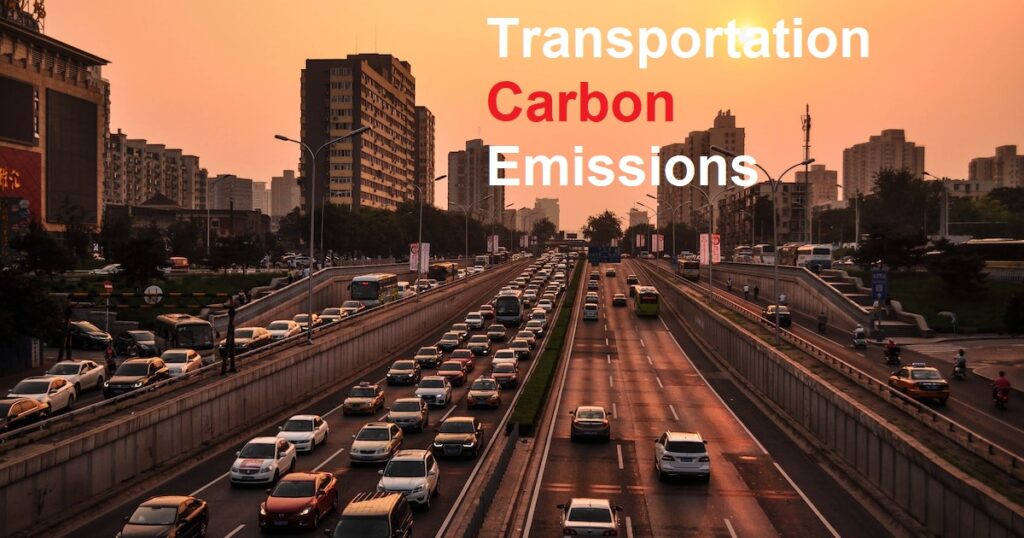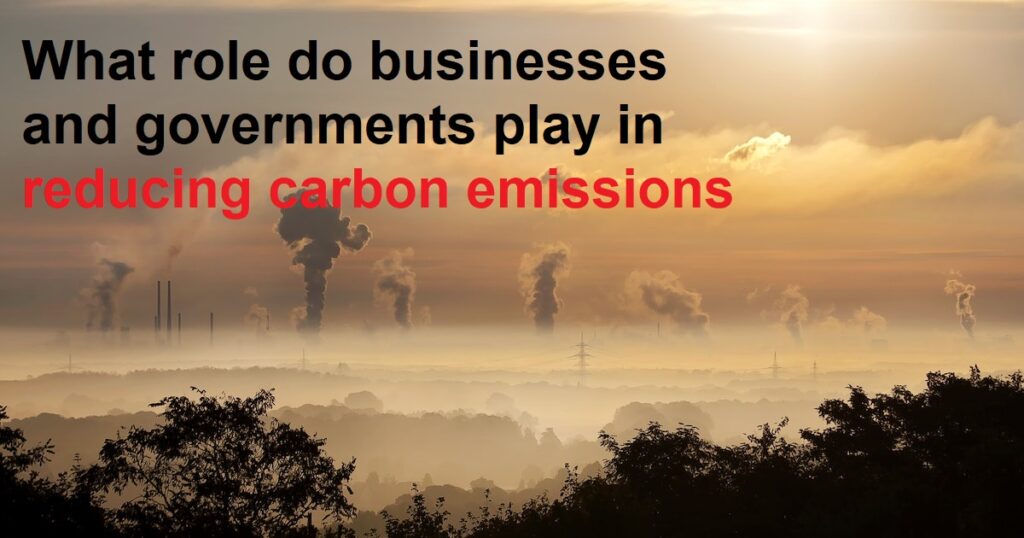Tips and Strategies Carbon Footprint
As the global population continues to grow and consume natural resources at an alarming rate, it’s become increasingly important for individuals to take action to reduce their carbon footprint. A carbon footprint is the number of greenhouse gases, primarily carbon dioxide, that are released into the atmosphere as a result of human activities such as driving, flying, and consuming energy.
Here are some practical tips and strategies that you can use to reduce your carbon footprint and make a positive impact on the environment.
Introduction
- What is a carbon footprint?
- Why is it significant to reduce your carbon footprint?
- The current state of the environment and the role of human activity.
Understanding Your Carbon Footprint
- What are the main sources of carbon emissions?
- How can you calculate your carbon footprint?
- Tools and resources to measure your carbon footprint.
Reducing Your Energy Consumption
- Switching to renewable energy sources
- Energy-efficient appliances and lighting
- Using smart home technology
- Tips for reducing energy usage in your home and workplace.
Transportation
- Sustainable transportation options
- Carpooling and public transportation
- Electric and hybrid vehicles
- Tips for reducing emissions while driving.

Sustainable Food Choices
- The carbon footprint of food production
- Eating a plant-based diet
- Local and seasonal food choices
- Reducing food waste.
Waste Reduction
- The impact of waste on the environment
- Recycling and composting
- Reducing packaging and single-use items
- Tips for reducing waste at home and work.
Green Living
- Eco-friendly home renovations and construction
- Landscaping and gardening practices
- Shopping sustainably
- Choosing eco-friendly products.
1. What is the most effective way to reduce your carbon footprint?
The most effective way to reduce your carbon footprint is to make sustainable choices in all areas of your life. This includes reducing energy usage, choosing sustainable transportation options, eating a plant-based diet, reducing waste, and living a green lifestyle. By making small changes and being mindful of your consumption habits, you can significantly reduce your impact on the environment.

2. How much of an impact can one person really make on the environment?
While it may seem like one person’s actions can’t make a significant impact on the environment, the reality is that every individual has the power to make a difference. By making sustainable choices and encouraging others to do the same, you can help to create a ripple effect of positive change. When millions of people make small changes, it can add up to a significant reduction in carbon emissions and a healthier planet for future generations.
3. Is it expensive to switch to sustainable energy and products?
While some sustainable products and technologies may have a higher upfront cost, they often pay for themselves in the long run through energy savings and reduced environmental impact. There are also many affordable options for reducing your carbon footprint, such as using energy-efficient light bulbs, reducing water usage, and eating a plant-based diet. It’s all about making conscious choices and prioritizing sustainability in your consumption habits.
4. How can I convince my family and friends to adopt more sustainable practices?
One of the most effective ways to encourage others to adopt more sustainable practices is to lead by example. When your friends and family see you making sustainable choices and enjoying the benefits, they may be more likely to follow suit. You can also have conversations with them about the importance of reducing our carbon footprint and how their actions can make a difference. Share articles, books, or documentaries that inspire you and provide practical tips for sustainable living. Finally, encourage and support each other in your sustainability journeys, and celebrate your successes together.
5. What role do businesses and governments play in reducing carbon emissions?
Businesses and governments have a critical role to play in reducing carbon emissions and creating a more sustainable future. Governments can implement policies and regulations to reduce greenhouse gas emissions, such as setting emissions targets and investing in renewable energy. Businesses can also make significant contributions by reducing their own carbon footprint and investing in sustainable practices, products, and technologies. Consumers can also use their purchasing power to support businesses that prioritize sustainability and demand action from governments. Together, we can all work towards a healthier and more sustainable future for ourselves and the planet.

6. What are some practical ways to reduce our carbon footprint?
There are many practical ways to reduce our carbon footprint, including:
- Use public transportation, carpool, bike, or walk instead of driving alone
- Use energy-efficient appliances and light bulbs
- Reduce water usage by taking shorter showers and fixing leaks
- Buy locally produced food and products to reduce transportation emissions
- Use reusable bags, water bottles, and containers instead of single-use plastics
- Eat a plant-based or vegetarian diet, or reduce meat consumption
- Support renewable energy sources, such as solar or wind power
- Plant trees or support reforestation efforts
These are just a few examples of the many ways that individuals can reduce their carbon footprint and contribute to a more sustainable future.
7. How can technology help reduce carbon emissions?
Technology can play a crucial role in reducing carbon emissions and promoting sustainable practices. For example, electric vehicles and hybrid cars produce fewer emissions than traditional gasoline-powered cars. Smart home technologies, such as thermostats and lighting systems, can also help reduce energy usage and emissions. Additionally, renewable energy technologies, such as solar panels and wind turbines, are becoming more efficient and affordable, making them a viable alternative to fossil fuels. By investing in and promoting these technologies, we can make significant progress toward reducing our carbon footprint and creating a more sustainable future.
8. What are the benefits of reducing our carbon footprint?
Reducing our carbon footprint has many benefits, both for individuals and for the planet as a whole. By reducing our reliance on fossil fuels and promoting sustainable practices, we can improve air and water quality, protect natural habitats and wildlife, and reduce the risk of climate-related disasters such as floods and droughts. Additionally, many sustainable practices, such as biking and walking instead of driving, can improve our physical health and well-being. By working together to reduce our carbon footprint, we can create a healthier and more sustainable future for ourselves and future generations.

Conclusion
Reducing our carbon footprint is crucial for the health of the planet and the well-being of future generations. By making sustainable choices in our daily lives, supporting renewable energy technologies, and advocating for policies that promote sustainability, we can all play a role in creating a more sustainable future. Together, we can make a difference and create a healthier, more vibrant world for ourselves and future generations.
FAQs
- What is a carbon footprint?
A carbon footprint is the total amount of greenhouse gases, such as carbon dioxide and methane, that are emitted as a result of human activities, such as transportation, energy usage, and food production.
- Why is reducing our carbon footprint important?
Reducing our carbon footprint is important because greenhouse gases contribute to climate change and its negative impacts, such as rising sea levels, increased frequency and intensity of natural disasters, and damage to natural habitats and ecosystems.
- How can individuals reduce their carbon footprint?
Individuals can reduce their carbon footprint by making sustainable choices in their daily lives, such as using public transportation, reducing energy and water usage, and supporting renewable energy sources.
- What role do businesses and governments play in reducing carbon emissions?
Businesses and governments have a critical role to play in reducing carbon emissions by implementing policies and regulations to reduce greenhouse gas emissions, investing in renewable energy, and promoting sustainable practices.
- What are the benefits of reducing our carbon footprint?
Reducing our carbon footprint has many benefits, such as improving air and water quality, protecting natural habitats and wildlife, reducing the risk of climate-related disasters, and improving our physical health and well-being.
